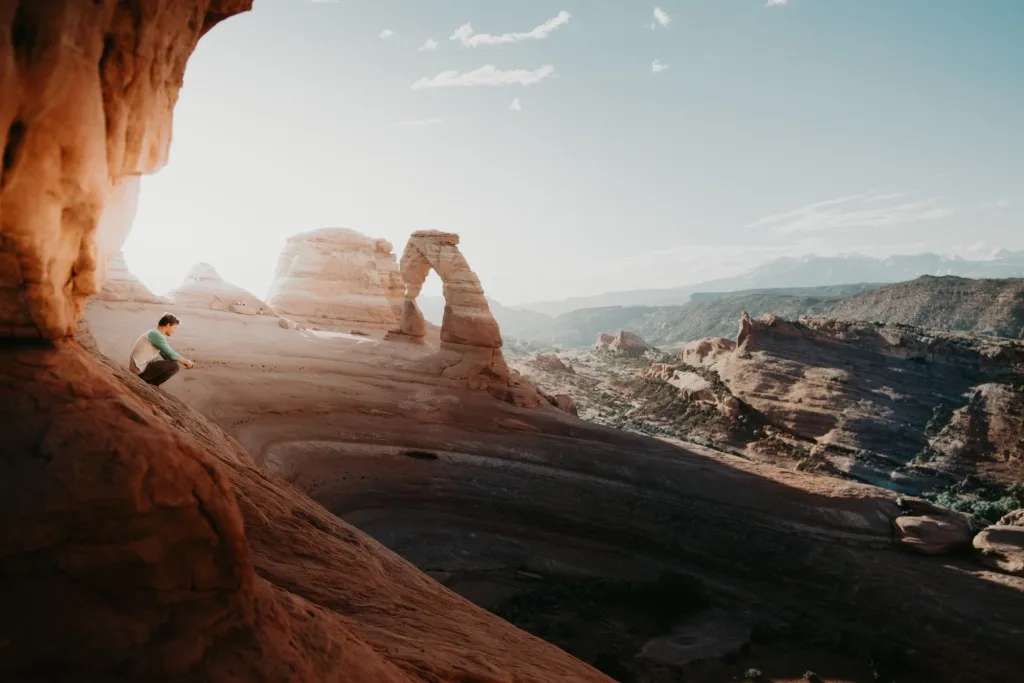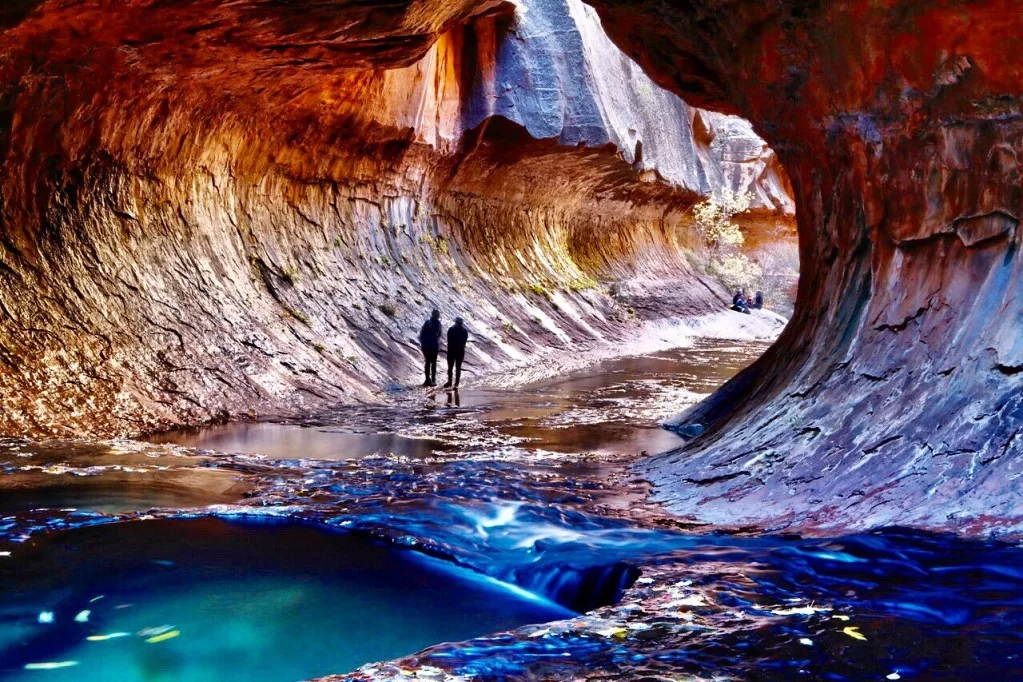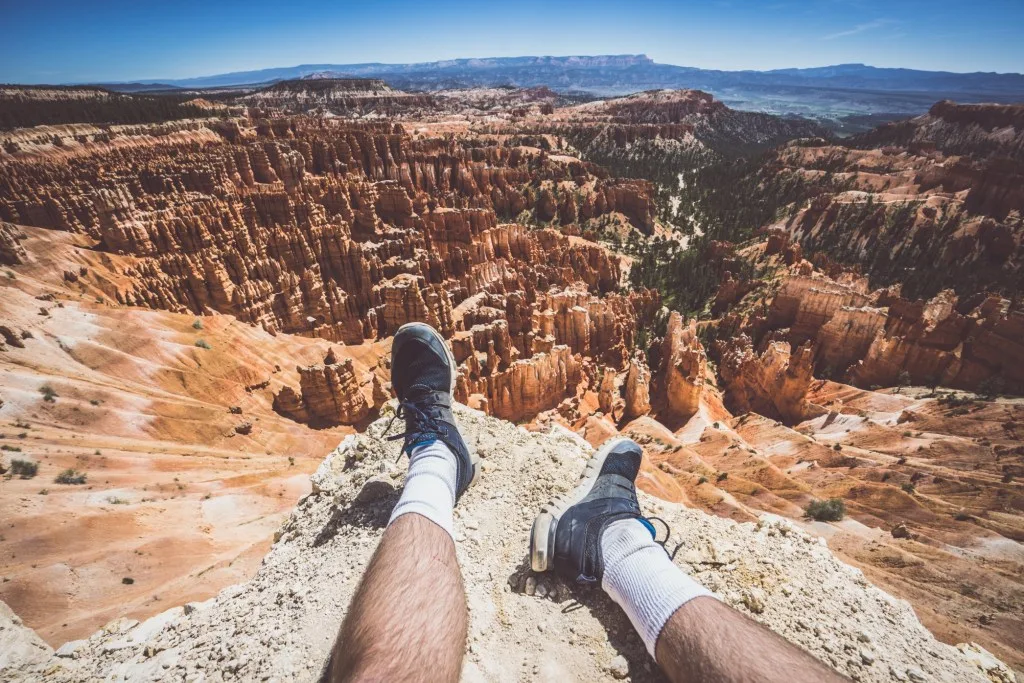The Utah National Parks Ranked Best To Worst
Are you getting ready for an epic adventure to Utah national parks? The state is known for its amazing collection of National Parks. We’re making the planning easy for you by ranking them best to worst.
Go on your ultimate Utah RV trip using these recommendations.
Let’s dive in!
We’ve ranked the five national parks in Utah using the following criteria.

Facilities
Having clean, accessible, and an adequate number of facilities is a top priority for any trip. We share which facilities each national park offers.
Trail Variety
Utah national parks are for exploring. That’s why trail variety is an important component of ranking the parks. Having a mixute of trail skill-level is important. We also like when trail heads have good accessibility and parking.
Ease Of Access
Easy access to and around a national park is another area we focused on in ranking. We’ve paid attention to accessibility for RVs as well as people of all ages and abilities.
Sheer Beauty
When visiting a national park you expect beauty! We’ve given the Utah national parks each a “gorgeousness” rating on a scale of 1 to 10.

1. Zion National Park
Zion National Park is the southernmost park in Utah. It has towering sandstone cliffs with rock layers that hold an ancient history. The park offers hiking, canyoneering, camping, and a shuttle service.
Facilities: There are three campgrounds inside the park. They are open from March to October. Campgrounds fill fast and have size restrictions, so be sure to book early.
Public restrooms are located throughout the There are water fill stations located throughout the main canyon. Water fill stations and public toilets can also be found at the Visitor Center Zion Human History Museum, Zion Lodge, The Grotto, Temple of Sinawava, and Kobb Canyons Visitor Center.
More importantly, there’s an amazing free campsite right outside of the park’s main entrance.
Trail Variety: Zion has a large variety of hiking trails. It also has a biking trail and two paved wheelchair-accessible trails. Angel’s Landing is one of Zion’s featured trails; it’s also one of the highest rated trails in America.
Ease Of Access: The Park Newspaper is a useful tool to help you get around Zion. You can find detailed accessibility information on the park’s website.
A couple of things to be aware of include that access to the Zion Canyon Scenic Drive is by Shuttle Bus only in the peak season. And the Zion-Mount Carmel Tunnel does have large vehicle restrictions. Any vehicle this 7’ 10” wide and/or 11’ 4” high or larger must get a tunnel permit.
Gorgeousness: 10/10

2. Bryce Canyon National Park
Bryce Canyon National Park is located about an hour and a half north of Zion National Park. It is famous for its irregular columns (also known as hoodoos) of red rocks and pink cliffs. The high elevation of the park provides outstanding views that a photo can’t fully capture.
Facilities: There are two campgrounds in Bryce Canyon as well as backcountry camping. Sunset Campground is open from April to October. And loop A in the North Campground is open year-round. Campgrounds fill fast and have size restrictions, so be sure to book early. Pre-peak season months do have some first-come, first-serve sites.
There are restrooms in the national park at the visitor center, lodge, general store, and campgrounds.
Trail Variety: Bryce Canyon has a variety of hiking trails for all skill levels. There is also an 18-mile shared-use path for walking, biking, leashed pets, skating, wheelchairs, and cross-country skiers.
The path connects the hoodoos of Red Canyon to Inspiration Point. In addition, there are guided horseback riding trails.
Ease Of Access: Parking can be challenging when the weather is warm. You can take the free shuttle instead for easier access to the park.
Learn specifics about wheelchair accessibility on the park’s website.
Gorgeousness: 9.3/10

3. Arches National Park
Arches National Park is the home to more than 2,000 natural stone arches. The geological wonder also features hundreds of massive red rock fins, pinnacles, and balanced rocks. Pollution in the park is extremely low, making it the perfect place for stargazing at night.
Facilities: There is one main campground in the park, Devils Garden. It is open from March to October and is typically full every night during this peak season, so be sure to reserve six months in advance. From November 1 to February 28, sites are first-come, first-serve.
There are only restrooms in the visitors center of the national park.
Here’s a list of the best free camping near Arches National Park.
Trail Variety: Arches has a number of easy hiking trails with a few that are wheelchair accessible. The park also offers more difficult trails, bicycling, rock climbing, and horseback riding.
There isn’t much shade in Arches and the trails can be brutally hot mid-day.
Ease Of Access: Parking is limited throughout the park, especially for RVs. We recommend arriving at the park when it first opens to maximize your time and access.
Gorgeousness: 8.4/10

4. Canyonlands National Park
Canyonlands National Park is located just south of Arches National Park. It is made up of many canyons that were carved out millions of years ago by wind and water. One of the most popular spots here is Horseshoe Canyon.
Facilities: There are two campgrounds in the park, Island in the Sky (Willow Flat) Campground, and The Needles Campground. Both are open year-round and allow RVs up to 28 feet long. Backcountry camping is also available throughout Canyonlands.
Water filling stations are limited in the park but can be found at the Sky Visitor Center, The Needles Visitor Center, and The Needles Campground. And there are restrooms at the visitors center.
Trail Variety: Canyonlands has numerous hiking trails. Its hundreds of miles of trails include day hikes and backpacking routes. Horseback riding is allowed on certain trails with a permit.
But due to the lack of water in the park, horseback riding is limited.
Ease Of Access: Island in the Sky is the most accessible area of the park and is closest to Moab. Click here to read more info on the park’s accessibility.
Gorgeousness: 7.7/10

5. Capitol Reef National Park
Capitol Reef National Park is full of red rock, cliffs, and the white domes of Navajo Sandstone. Hiking, rock climbing, and bird watching are among popular activities in the park. There are over 230 species of birds in this national park.
Facilities: There is one campground for RVs in Capitol Reef. Fruita Campground is open from March to October. There are also two primitive campgrounds and backcountry camping.
Restrooms are lacking at this park. There are accessible restrooms available at the visitors center.
Trail Variety: Capitol Reef has 15 trails for day hiking and many more options for backpackers. There are also designated trails for horseback riding and bicycling.
Ease Of Access: Getting around Capitol Reef is quite straightforward. While there aren’t specific accessibility services at this national park, much of the park can be seen by vehicle.
Gorgeousness: 6.9/10

What Is The Best Time Of Year To Visit Utah’s National Parks?
The best four months to visit Utah national parks are April, May, September, and October. Temperatures are moderate and there are fewer crowds. June to August is also a great time to visit, but it will likely be hot with more tourists.
Fall can be a great time to see colorful foliage in the national parks. And winter months may have snow, which adds a different level of gorgeousness to the parks.
How Much Time Do You Need To Hit All The Parks?
We recommend two weeks to visit all five Utah national parks. If you only have a week, you could see them all since they’re fairly close together. Of course, the more time you can devote to these parks the deeper you’ll be able to explore.
Utah National Parks, Which Do You Choose
Utah national parks are full of geological wonders. We hope that you will have the opportunity to visit them on your RV travels. Be sure to send us a photo if you do!
Discover the Best Free Camping Across the USA
To be honest with you, we hate paying for camping. There are so many free campsites in America (with complete privacy).
You should give it a try!
As a matter of fact, these free campsites are yours. Every time you pay federal taxes, you’re contributing to these lands.
Become a FREE CAMPING INSIDER and join the 100,000 campers who love to score the best site!
We’ll send you the 50 Best Free Campsites in the USA (one per state). Access the list by submitting your email below:
These are just the National Parks. Add the National Monuments, the National Recreation areas and you could spend months here!